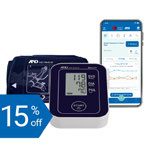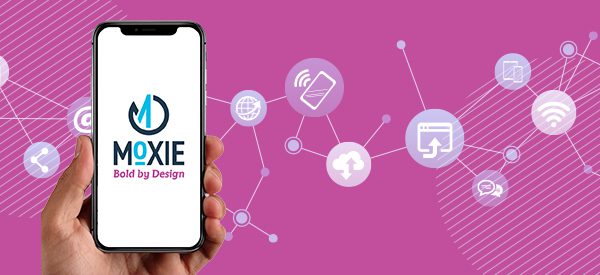For more than 25 years, I have been privileged to chat with many clients on a favorite topic of mine, branding. In that first “getting-to-know-you” meeting, I often ask the client, “What is your most valuable business asset?”
And although I hope for it, I rarely hear the answer I’m longing for. Very few answer the question with, “My brand.”
Next, I typically ask them what they think they need to do to make more money, and even fewer say, “Invest in branding.”
Your company’s brand is the most valuable business asset you own. Branding is the single most important thing you can do to positively affect your revenue.
As you begin planning for 2022, give these two things a little love, and your business will grow significantly.
Brand and Branding vs. Marketing
Your brand is not just a logo and some colors. Sure, it includes those things. But it includes a whole lot more. It is the sum of verbal and nonverbal, tangible and non-tangible, visual and nonvisual elements associated with your company.
Branding is the process of creating, and through continuous improvement, strengthening your brand, and differentiating from the competition.
Marketing is closely related, but it’s not the same thing. Marketing is the process of promoting your products and services. It is your perspective and what you say about your company.
Branding is from the perspective of your customer and what they say about your company.
If you send out a direct mail piece and tell the customer, “We are the best home health provider.” That is marketing.
When a customer says, “I hear you are the best home health provider,” that is branding.
In simpler terms, your brand and branding are:
- The image customers have in their minds when they hear your company name.
- What they say about your company when you are not around.
- And the aftertaste that comes from having an interaction with your product, service, employees, or company.
The Benefits of Branding
The healthcare marketplace is very competitive. Your consumers are in control and have lots of choices at their fingertips. Not only are you competing with the provider down the street, but you are also competing with online businesses who can supply a similar product or service to your customer or prospect.
Simply stated, the benefits of branding include:
- Differentiation from competition, giving you a competitive advantage.
- Clear delivery of your message to your customers and prospects.
- Emotional connection to customers and prospects.
- Confirmation of your credibility, building trust.
- Motivation for the buyer to make a purchase.
- Loyalty encouragement.
- Consistent representation of your company in all aspects of marketing and sales.
- Attraction and retention of top talent.
Power of Branding
The proof is in your pocketbook, not the customers’.
Businesses spend a lot of time focusing on pricing their products and services. I am not going to tell you pricing is not important. It is. But you can get customers to stop focusing on price. How? Branding. The best way for me to illustrate this is to tell you a story.
I love coffee. I am also extremely frugal, yet rarely does a day go by that I don’t drive through and pay a premium price for coffee. Why? I’d love to tell you the cup of coffee I buy tastes better than the coffee I could make at home, but the answer is, branding.
Several years ago, I was on vacation with my nephew. We share a love for coffee, so our vacation itinerary included daily coffee stops. Before departing, we read online reviews and picked the coffee shop we’d visit. We loved everything about this company before we drank a single drop of their coffee.
They did not disappoint. We had coffee every day of our vacation, and became loyal customers. After vacation we learned the closest location to home was “only” 45 miles away. For several years we made regular trips to get coffee. Four years ago, they opened a location about 25 miles from us. A few trips a year turned into monthly coffee runs. Just one year ago the franchise built a location eight miles from home. I make daily trips to get coffee.
I could stay home and make a cup of coffee for less than a quarter.
I could stop at the convenience store six blocks from my house and pay $1.99.
Instead, I drive a 16-mile round trip every day to pay $6 for a cup of coffee.
I love their brand so much; I want to continue supporting their business—I don’t care about price.
If you’re reading this and thinking to yourself, I don’t pay more for a product because of its branding. I challenge you to think again. Have a cellphone in your pocket or purse? Did you buy the cheapest one? I doubt it. You paid premium because of its branding.
Act. Improve Your Company’s Brand and Bottom Line.
I hope you now see or are reminded of the value of branding. Let’s talk about a few things you can do to improve yours, and your bottom line.
- Know your audience(s). Clearly identify a couple of your buyer personas and create custom content that will resonate with them. Make sure to deliver your custom content in a personal way and via the channels that will reach them.
- Tell your story in a new way. And keep it simple. Use customer testimonials and tell stories of how your company helped its customers. Or tell stories about your employees, why they love what they do and how they connect with customers. A relatable story goes a long way and helps customers or prospects see your brand in a new light.
- Educate. Don’t rely on the hard sell of the past. Customers are inundated with advertisements daily. So many, in fact, they tune them out. Instead of relying on the hard sell in marketing pieces, write some educational content and share it with customers and prospects. Pick a pain point your customers are facing. Teach them about a solution, and they won’t tune it out. They’ll also notice who helped them, and you’ll stay top of mind when they’re ready to purchase.
- Humanize. Customers and prospects want to connect emotionally with your brand. Find ways to make your brand more human. Change your brand voice to be more authentic or use faces of your staff in your marketing materials and your brand will begin to seem more human. Instead of emailing or dropping another postcard in the mail, pick up the phone or send a handwritten note.
- Invest in an online event. The last two years have made it more difficult to connect with customers and prospects, which leaves hosting an online event as a lucrative platform. A webinar, seminar, or product launch is a great way to engage.
2022 will no doubt be another exciting year full of unexpected twists and turns. Are you ready to challenge yourself and grow your business? Start with your branding. It will be worth it. I am sure about that.












